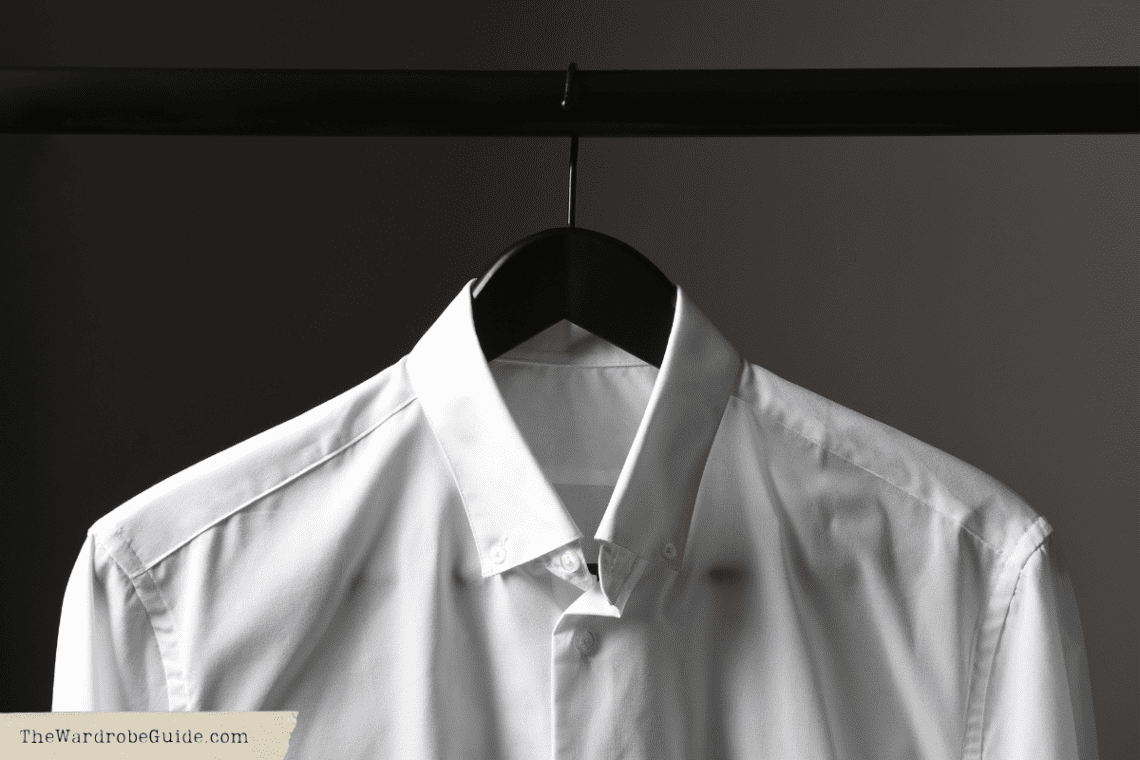Let’s take a closer look at the anatomy of a men’s dress shirt! A dress shirt is one of the most basic pieces of clothing–one you will probably find to some extent in any show that takes place as early as the Victorian era to the present day.
When you break a dress shirt down into pieces, you will find that although the shirts in different periods look different, all of the dress shirts have pretty much the same build, just with different variations in style.
We will dive further into different variations of collar, cuff, pocket, fabric, etc in a later article.
This post may contain affiliate links. We only recommend products we have tried and tested ourselves. If you use these links to purchase something, we may earn a small commission at no additional cost to you. These links help us cover the running costs of The Wardrobe Guide! Read our full disclaimer here.
What Makes a Shirt a Dress Shirt?
A dress shirt is any shirt that has a collar around the neck and a full-length front placket that closes via buttons or studs.
Other Names For a Dress Shirt
While working with clothing, you might hear people call dress shirts a couple of different names. These names could be regional or industry based. Some other names you could hear for a dress shirt are:
- Button Up Shirt
- Button Down Shirt
- Button-Front Shirt
Why Should I Know the Anatomy of a Men’s Dress Shirt?
If you are a wardrobe professional, knowing these parts will be extremely helpful to you. A large part of being a good dresser is the ability to effectively communicate issues between different groups of people. As a dresser or dayworker, being able to discuss in detail the build of a costume will be helpful when discussing problems in your costume pieces with designers, stitchers, and even your Wardrobe Supervisor.
If something breaks or rips on a shirt, you will want to be able to communicate where the repair needs to happen concisely in a small box on a repair sheet. If you are unable to guide the stitcher where to look, they might not be able to find and finish your repair.
The same applies when communicating with a designer. Most of the time, the actor may not know the exact words to what isn’t working with the fit of their costume. They will communicate issues with pieces as what it feels like to wear the piece. It may be up to you as their dresser to translate this feeling into a note for a specific part of the costume to give to your designer, stitcher, or supervisor.
The Anatomy of a Dress Shirt
Dress Shirt Front
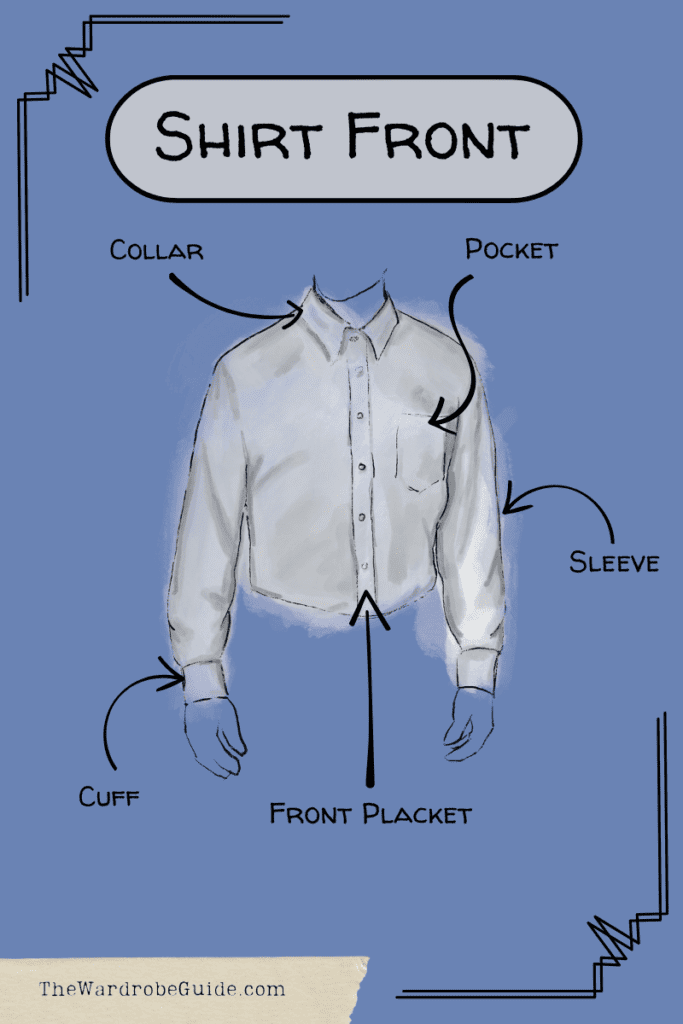
Collar
There are a wide variety of different cuts and styles of collars that we will cover in a later article. A collar is the fabric that wraps around the neck at the top of a dress shirt. If you are speaking with a tailor, they might argue that the actual “collar” is specifically the fabric that is folded over at the neck that stylistically frames the knot of the tie. By this definition, the small band of fabric that attaches the collar to the shirt is actually the “collar band.” While this is great to be aware of, typically in theatre, you won’t have to be any more specific than “collar” and people will generally know what you are referring to.
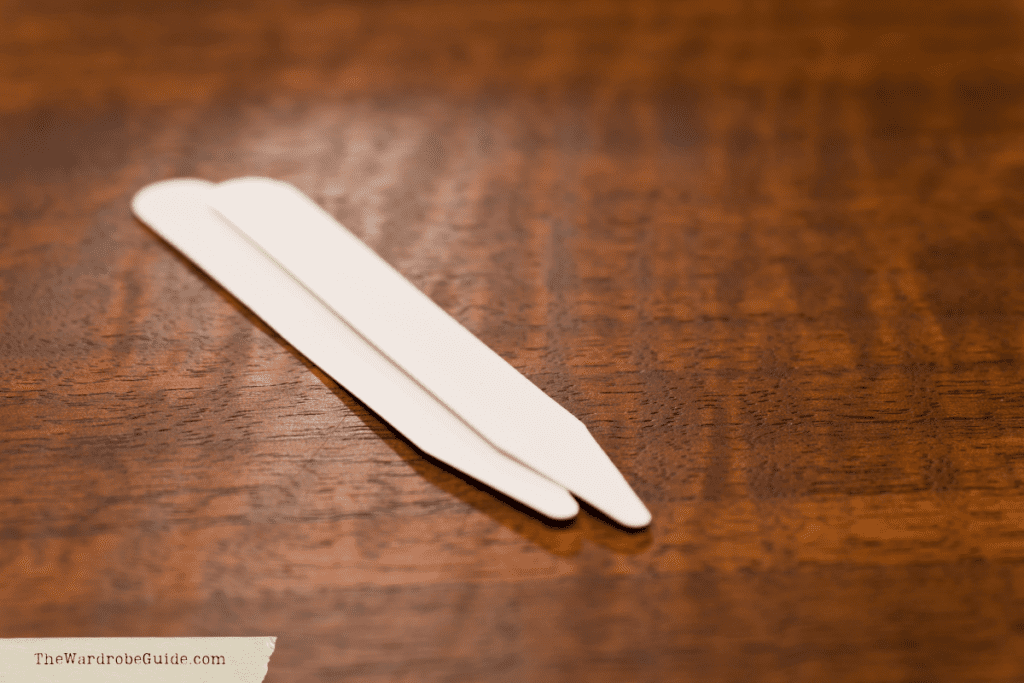
Collars may or may not have “collar stays”. These are small pieces of plastic or metal typically that one can insert into channels at each point of the collar. These “collar stays” help the collar stay looking sharp and stand straight as it is worn.
A pocket is fairly self-explanatory. It typically sits on the left side of the shirt front. The most common pocket you’ll see in a basic dress shirt is called a “patch pocket,” but there are many different types of pockets for different styles of shirts which we will cover in a later article.
Sleeve
If you have worn clothes before, you have probably seen a sleeve. When it comes to the fit of a dress shirt, the sleeve length is very important, so we felt it should be mentioned in this article. On a modern-day dress shirt, the sleeve seam should hit close to the top of the shoulders. The cuff should then hit right at the base of the thumb for a perfect fit.
Front Placket
The front placket is the center front part of the dress shirt. It is the strip of typically folded over or doubled fabric that typically contains the buttons on one side and the button holes on the other. Some shirts (such as tux shirts) might have buttonholes on both sides. In this case, you would use studs to close the shirt. Referring back to the basic definition of a dress shirt, a front placket is a key feature that makes a dress shirt a dress shirt.
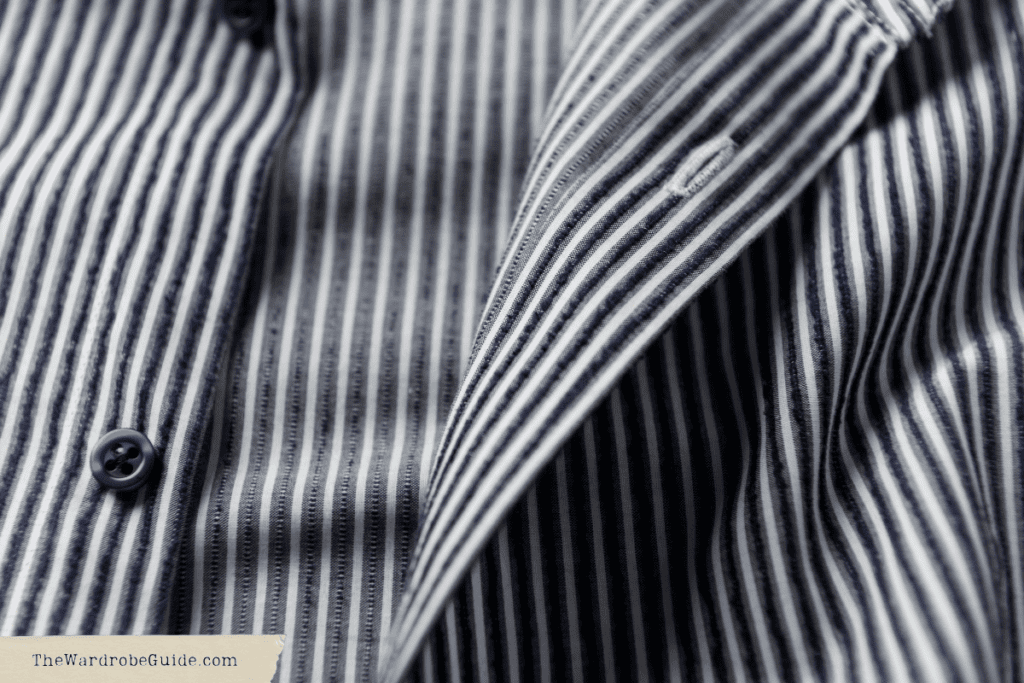
Cuff
A cuff is the stiff layers of fabric that are stitched at the end of the sleeve to finish it around the wrist. The cuff can typically be unbuttoned to lay flat and to help pull the sleeve over the hand. They typically come with buttons attached to slip through the button holes. The cuff is also one of the many points to would typically rig in a dress shirt for a quick change.
There are also many different styles of cuffs which we will cover in a later article. The most basic cuff is a barrel cuff, which has a squared edge and two buttons.
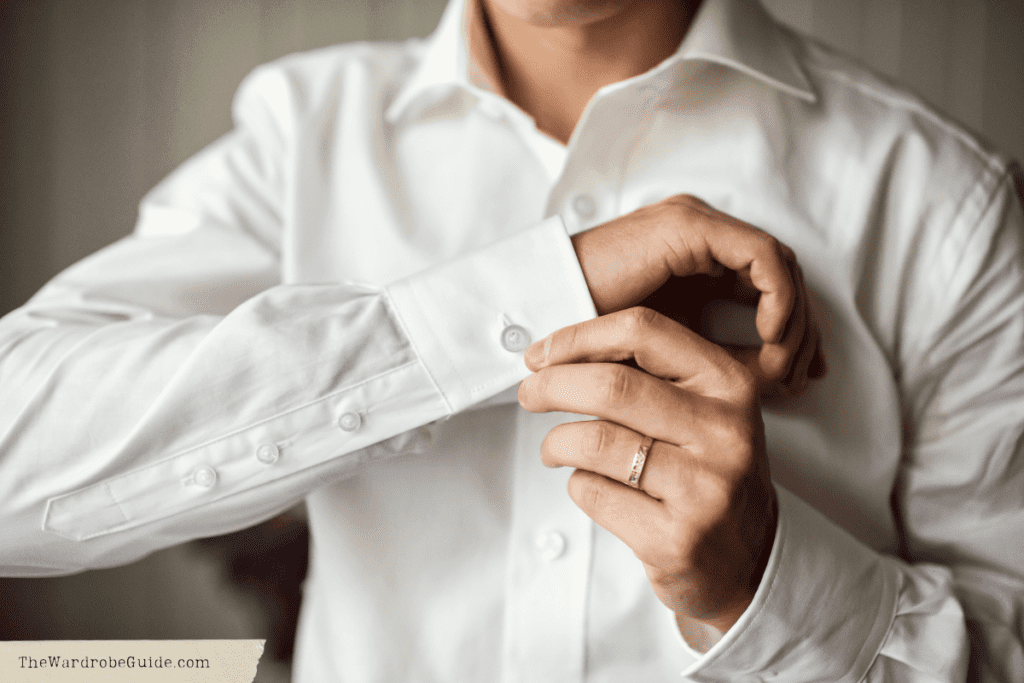
Gusset
You may see a small gusset at the hem of the side seam of a dress shirt. This small triangular piece of fabric might be made out of the same fabric as the rest of the shirt, or a contrasting fabric if the style of the shirt allows it. The gusset stabilizes the side seam of the shirt, by strengthening the end of the stitch line, which is a typically weak area that is prone to coming unstitched.
Dress Shirt Back
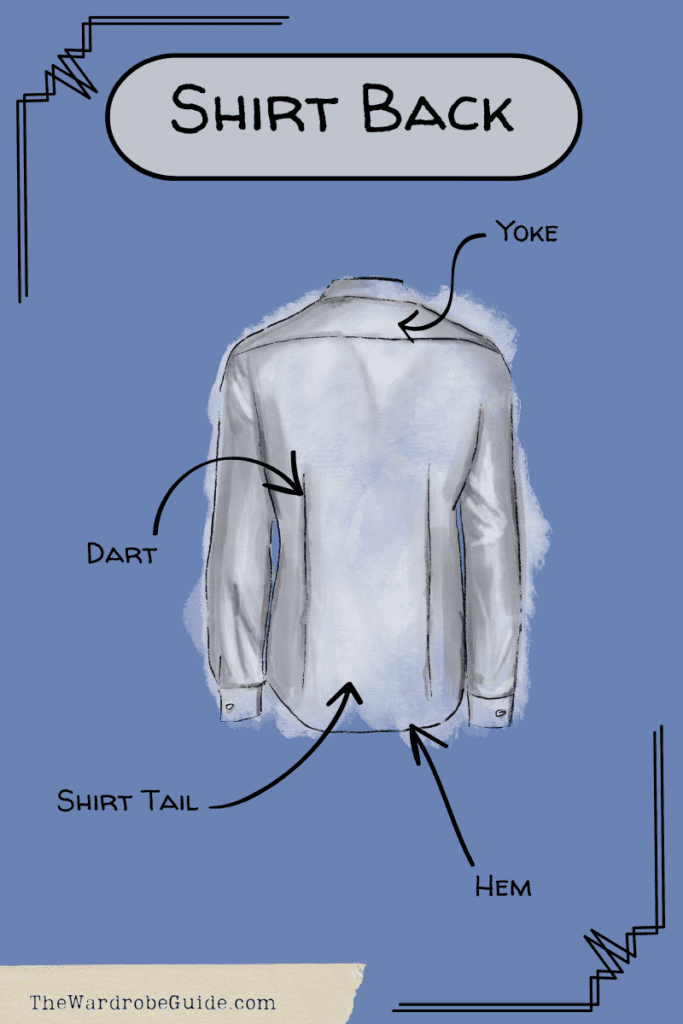
Yoke
A yoke is a style choice for a dress shirt. Because of this, not every shirt has one– and some shirts have them both in the back and the front! (Think western-style cowboy shirt). You can find the back yoke by looking at the back of a shirt for a seam that runs over the shoulder blades between the two sleeves of a shirt. The yoke is the fabric that is between this seam and the shoulder seam of the shirt.
While most shirts you will buy in a store will have one piece of fabric that makes up the yoke, you might come across a tailored shirt that has a seam down from the collar that splits the yoke in half. This is called a “split yoke” and it helps give an even more tailored fit to the shirt.
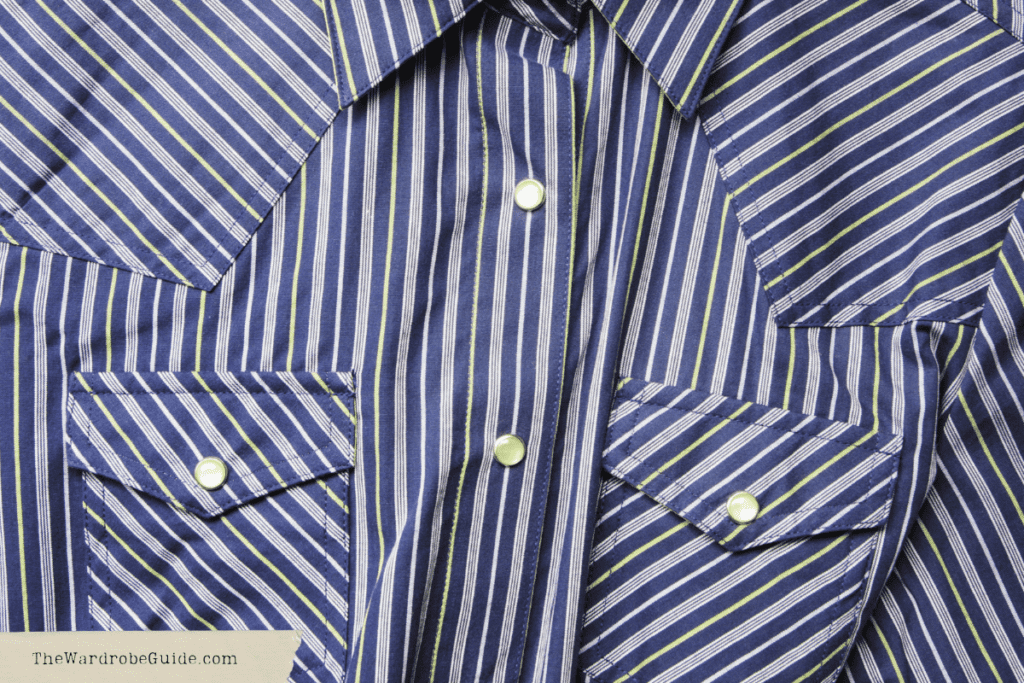
Dart
Two long vertical seams in the back sides of the shirt that you might see if a dress shirt is tailored. This is where a shirt might have been taken in to finesse the fit and make it tapered at the waist.
Shirt Tail
The shirt tail is the length of fabric that falls beyond the waistband of the wearer’s pants and over their pockets (when untucked) A shirttail gives the wearer enough fabric for the shirt to not come untucked when the wearer moves or raises their arms.
Hem
The hem of a shirt is the bottom edge of the shirt where the fabric ends. Typically, the hem is rolled under to give a nice clean finish, so the shirt fabric does not fray. However, it is not uncommon in theatre to see a serged hem on a dress shirt for various reasons.
Pleat (not pictured)
A pleat is another style choice for a dress shirt. As you can see by the drawing above, not every shirt has a pleat. There are different pleats that might appear in the center back of a shirt, directly under the yoke. There are different styles of pleats such as a double pleat (typically European) or a box pleat (typically American). Pleats can also help give the arms more range of motion in a shirt.
Cuff Detail
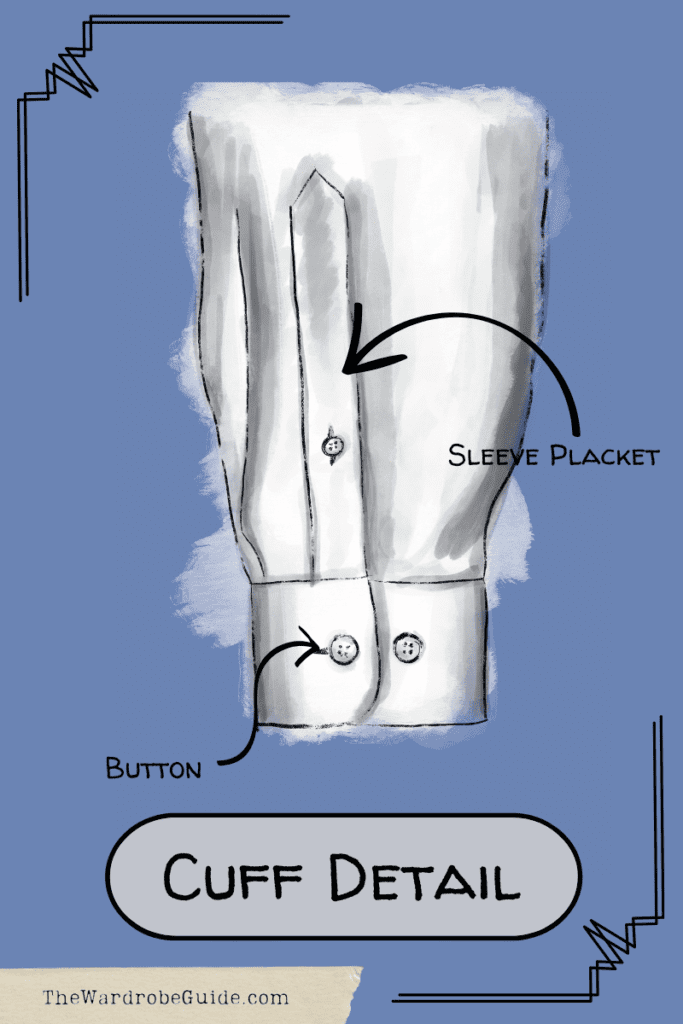
Sleeve Placket
A sleeve placket is a split in the sleeve of the shirt where the sleeve meets the cuff. Like a Front Placket, there is often more than one layer of fabric and/or interfacing here to help stabilize the placket. There are also typically one or two buttons/ button holes on this placket as well.
The function of a sleeve placket is to give the wearer even more room to get their hand into the sleeve. It also makes it more comfortable for the wearer to roll their sleeve up.
Button
The button is the basic closure on a dress shirt. You will find them in various places, such as the cuffs, the front placket, and sometimes even on the collar. In theatre, typically all the places where you see a button are places where you might need to focus to Quick Rig a specific shirt.
More Information
For more information about men’s dress shirts, check out this book! It truly has everything you would want to know about men’s fashion, dress and more!
Dressing The Man: Mastering the Art of Permanent Fashion, by Alan Flusser
Do you think it is important for young wardrobe professionals to be familiar with the pieces of a garment? Would you like to see more in-depth looks at specific garments in The Wardrobe Guide? Let us know in the comments!



